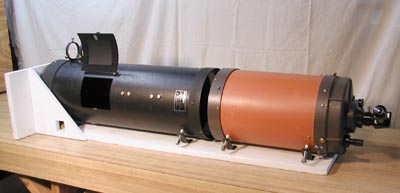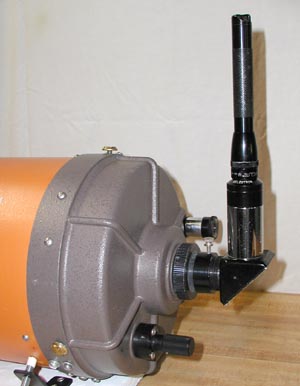

The focus of the camera is adjusted by jacking the spider cage toward or away from the mirror using the jam nuts on the Invar bars spacing the spider from the mirror. To test the adjustment of the focus on a Schmidt camera by making star photographs can take quite a long time. Aligning the film holder to be perpendicular to the main optical axis can also be a vexing problem. Fortunately, there is a purely optical method for adjusting the focus. The main requirement for this method is another telescope of the same, or nearly the same aperture. To focus the 8-inch Schmidt, an 8-inch Schmidt-Cassegrain telescope will work quite well. The procedure involves locking the telescope at its infinity focus, placing it nose-to-nose with the Schmidt camera, and using it to examine the appearance of the film holder in the Schmidt camera. It sounds more complicated than it is and will be fully explained shortly.

 |
 |
 |
This focusing eyepiece view is of the center of the crosshair target in the film holder at the above right. Notice the high magnification showing the fibers of the paper |

Go to the previous page ---- Special Equipment for Focusing the Celestron/Epoch Schmidt Camera